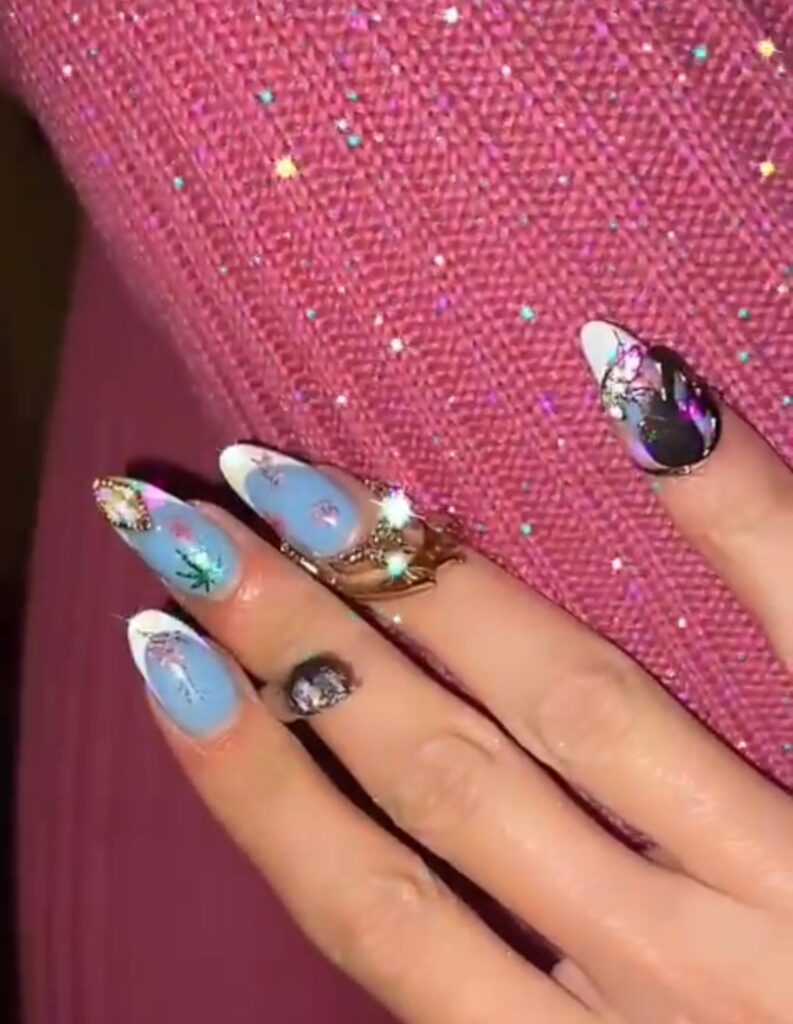Hands Up: Lecourt Mansion
GLITTER PARADE

“I wear makeup but not that much; and in fact, the more time I spend on it, the more I feel like it’s a mess,” says Nix Lecourt Mansion. “But I take great care of my hands. They are my working tools – even though I work more via a computer keyboard than with fabrics now. As a seamstress, I need to have my nails done.” She continues: “My mother taught me that. She worked in human resources, she always looked at people’s hands, because it revealed how much care they put into their work.”
Her hands, then, are like weapons defending themselves against tweeds riddled with rhinestones on ensembles that blaze in the night between shadows and transparencies. A cosmetic ready-to-wear, skin deep, an identity reinvented: “At my first show, a manicurist covered the models’ nails with Swarovski crystals, which echoed the clothes,” recounts the transgender designer. “I love everything that shines. When I was little, I used to make pearl rings that I sold to my girlfriends, I’ve always loved drawing.” She wove her first garment in an upholstery fabric. “I had put my little sister in it, it looked like she was possessed, with an arm behind her head,” she muses. Then came the evening classes, the apprenticeship, the experience. Today she can tailor a garment from start to finish. “The hand is still very important; the main point is that everything must be properly finished,” she says, adding, says, “A good seamstress knows how a fabric will react; when you work the bias, if you stitch without protection behind, the fabric can melt, react, escape. You must hold it. You can’t go too fast.”
As she talks about her nails, she caresses the fabric to erase the bumps without scratching it. To celebrate vulnerability through light, to take pieces of fabric, and reveal the body in all its facets. “Revenge Look” is the name of the collection presented on March 5 at the Garage Amelot. “We have a lot of ‘couture’ pieces, a lot of hand stitching on delicate materials, like organza, muslin, ottoman. I collected fabrics from workshops that were closing, and I recycled garments from my first collection. I thought it was a shame to leave scraps lying around. I turned a coat into a dress.” And to clarify: “I like hybridization; anything beautiful can be transformed. The stronger the material, the longer it will last,” she says. As for the gesture she finds most moving: “A caress, inevitably.” Is there one that annoys her in particular? “That someone steals my cigarette or my joint from my hands.”



